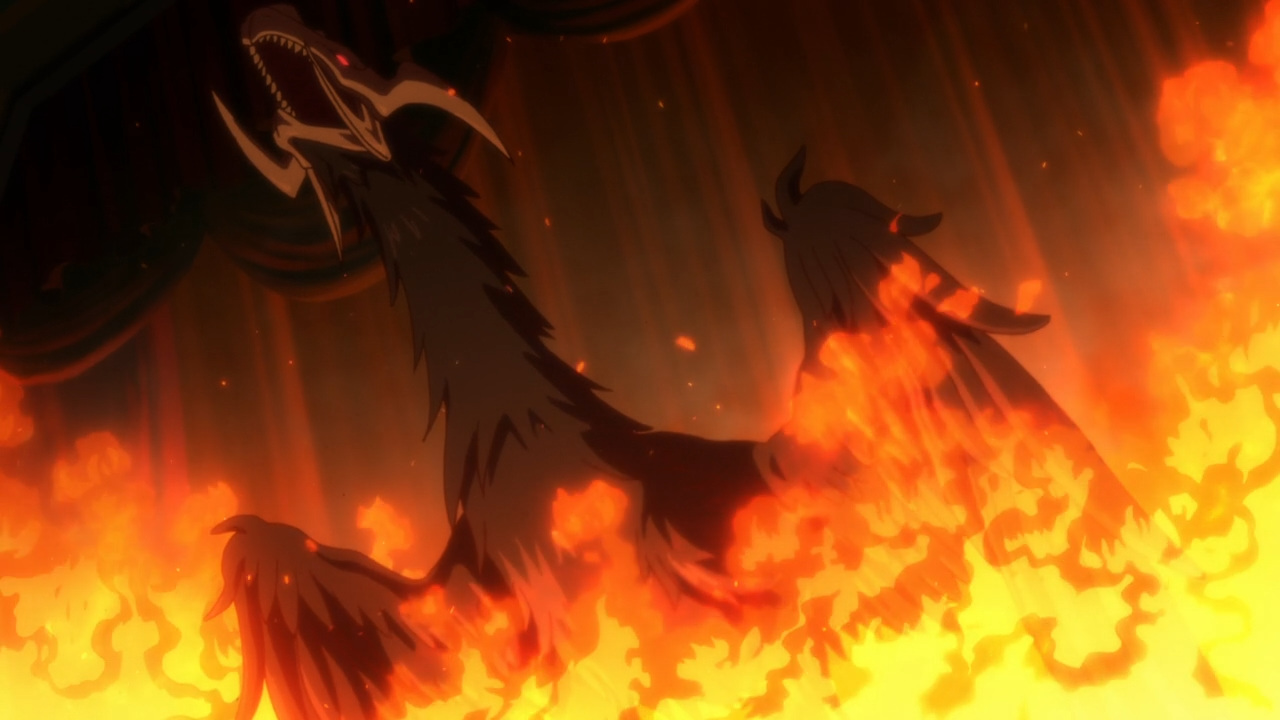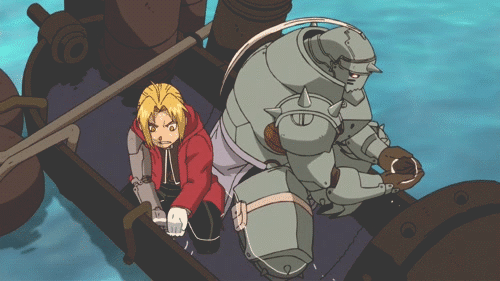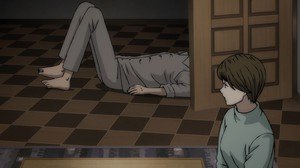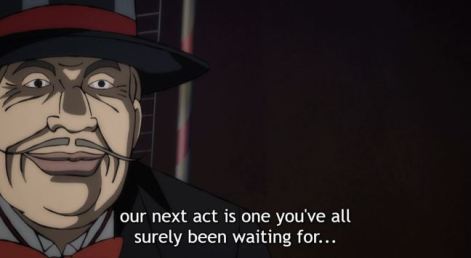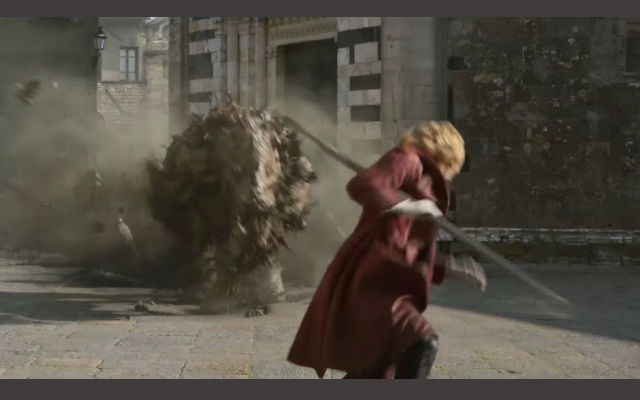Been awhile since I did one of these. That’s been mostly due to a lack of material from the recently passed NANOREN, where a good deal of the entries had to be either a demo or unfinished. So we’ll do what must be done and play the only one that caught my eye but, for now, let’s talk about one of the most successful indie games on the market: Stardew Valley.
Naturally I preface this with the fact that this game is, of course not specifically aimed at girls and has far more to it than the relationship elements. But, since it’s listed on several Otome websites, and it plays to wish-fulfillment like nobody’s business, we’re gonna discuss it. This game is Harvest Moon on steroids, guaranteed to make you waste your life away in the best way. It’s almost impossible to believe this game was programmed and illustrated by one guy.
This is Stardew Valley, the runaway success that will take you in, cuddle you, and refuse to let you leave.
Much like the original Harvest Moon, our plot centers around the start of a new life. And, of course, it begins with the ending of another life. Spoiler Alert: Grandpa’s dead. Before he passes, he gives you an envelope to be opened when you feel your spirit crushed by the burden of modern life.

Such a “happy” start…
An lo, you find yourself miserable while working your job at the soulless JoJa Corp, our resident Evil Corp with Traces of We Will Assimilate You. Fed up, you open the envelope to discover the deed to your Grandpa’s farm in Stardew Valley, next to Pelican Town. Pack’em up and head out kiddies;, it’s time to get back to nature! I mean yeah, your farm is a debris-covered swatch but it’s your debris-covered swatch, so get your tools and get going.
Oh, sweet butterball turkey, where do I start?
If you don’t think that upon stepping out of your tiny house, then you’ve probably played this game before several times. Because you are quite literally given the keys to your own place, a handful of means to get there, and only a few directions of what to do first. It’s your farm, kiddies, and you have a crap-ton of options to get it going. Your first project: make a character you can stand to look at for several hours, because there are no redos unless you wanna befriend the town wizard and shell out some cash.
Yes, there is a wizard. You’ll see.

Once you solve that conundrum, you’re given a bag of 15 parsnip seeds and released into the open world. Minecrafters of the world will delight when they realize they now have a debris-covered slate to build off of. You can hoe the ground to plant and grow seeds; you can chop down trees and smash rocks to get wood and stone for building; you can use said resources to make kegs, preserve jars and other farm sundry; you can take what you have to the local carpenter to build coops and barns. If farming’s not your business, you can forage for food and resources to do all of the above. A few days later, you’ll also find you can fish or go mining in caves, slaying monsters.

But this game is a spiritual successor to Harvest Moon so, naturally, there’s a social element to complete the Farm Life Simulator™. The game sets a mission for you to introduce yourself to most of the townsfolk, bachelors, bachelorettes, and most of your vendors. You quickly learn that the social element is extremely important to this game as each character has a carefully crafted personality, well-drawn sprites, and even their own storylines you can follow by befriending them. Just like other games of this caliber, you will befriend them by giving them gifts they like (feel free to use the wiki) and occasionally participate in personal quests. And, as always, there’s at least five bachelors and five bachelorettes you can marry with enough gifts and the right trigger items, and each one has a unique personality and set of Heart Event cutscenes. Granted, they all do the same thing once you marry them, but I appreciate the effort they do get.

I picked Elliot, because I, too, am a mushy romantic.
But hold your horses, cowboy. You see, just like Harvest Moon games past, you have a mission here. You see, JoJa has a big supermarket set up in town and they’re interested in the dilapidated community center, which has some seriously supernatural guests inside. These creatures of the forest, called Junimos, are willing to leave provided you can give them some gifts from the land in little care packages. Thus, you’ll collect the items they request and they’ll fix up the place. You can get all the rooms fixed up… or you can side with JoJa and have the place sold.
Because this game was a spiritual successor to Natsume’s original game in the Harvest Moon series, it has an extreme super nintendo look. Everything is displayed in bright, paint-like colors with pixelated in-game sprites and very detailed portraits for all dialogue. Said pixel-sprites are also animated for certain things, be it reading a book or playing the flute, adding yet another layer of uniqueness to each character. In short, this game is super easy on the eyes as you roam around and get to know your community.

And, in true fashion to this game’s progenitor, some of those people you meet can become your sweetheart-to-be. As mentioned, there are ten partners you can meet and fall in love with, no matter your gender, and each one has their own unique storyline. They act about the same once you marry them but, for once, they also make themselves useful. Your partner will occasionally water crops, feed animals, fix fences, and even make coffee. It’s a nice touch and I think it makes starting a family in-game totally worth it.
Since there are quite a few here that I don’t wanna spoil, we’ll just give a brief summary and let you make your pick.
Elliot
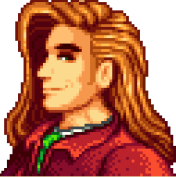
Elliot came to Stardew Valley about a year before you, deciding to commit hard to being a writer. He looks like he stepped out of a romance novel and almost behaves as such, making lots of poetic statements about life, the valley, and, yes, you. He’s a gentlemen first and foremost, but just struggling with the burden of living in a small shack, all alone, pouring over his new novel. He just wanted someone to talk to, providing an awesome but schmaltzy experience for his pursuers.
Sam
 If one can ignore Sam’s ridiculous hairstyle, one will find a reasonable, easy-going, guy who’s had to grow up real fast. With his dad off in the war (because there is one, not that it’s talked about much,) Sam has risen to the occasion to help his mom with the house and his little brother, Vincent. But Sam does have the ambition to start a band with his best buddy, Sebastian, and an unfortunate penchant to start projects without finishing them. In short, he’s the kind of guy most people would seek out in real life but doesn’t have much to offer here.
If one can ignore Sam’s ridiculous hairstyle, one will find a reasonable, easy-going, guy who’s had to grow up real fast. With his dad off in the war (because there is one, not that it’s talked about much,) Sam has risen to the occasion to help his mom with the house and his little brother, Vincent. But Sam does have the ambition to start a band with his best buddy, Sebastian, and an unfortunate penchant to start projects without finishing them. In short, he’s the kind of guy most people would seek out in real life but doesn’t have much to offer here.
Sebastian
 Meanwhile, you might miss the valley’s other resident hermit, the emo-tastic Sebastian. He’s got an unfortunate tendency to hide away in his room for very long stretches, typing away on the computer and only ever coming out for food, rain, or nighttime air. But there are some legitimate reasons for Sebastian’s self-imposed isolation and you’ll quickly find there’s a cute nerd hiding in that black sweater. Sebastian will not be for everybody, but I feel he’s worth the work.
Meanwhile, you might miss the valley’s other resident hermit, the emo-tastic Sebastian. He’s got an unfortunate tendency to hide away in his room for very long stretches, typing away on the computer and only ever coming out for food, rain, or nighttime air. But there are some legitimate reasons for Sebastian’s self-imposed isolation and you’ll quickly find there’s a cute nerd hiding in that black sweater. Sebastian will not be for everybody, but I feel he’s worth the work.
Shane
 Meanwhile, you will get a very rude reception from the overworked Shane, Marnie’s niece. He helps out with the chicken farm, so she can’t complain, but he’s starting to show some very worrying signs. From alcohol dependence to psychological depression, Shane is a project that will require lots of patience to slowly warm him up; it’s a real turn-around story and it has a lot of potential, albeit a lot of predictability.
Meanwhile, you will get a very rude reception from the overworked Shane, Marnie’s niece. He helps out with the chicken farm, so she can’t complain, but he’s starting to show some very worrying signs. From alcohol dependence to psychological depression, Shane is a project that will require lots of patience to slowly warm him up; it’s a real turn-around story and it has a lot of potential, albeit a lot of predictability.
Alex
 Alex is the jock and was a quick lesson for me not to judge people too much on first impressions. He’s arrogant and brash on first meeting, mostly to hide a lot of deep wounds on the inside. His story is about what you’d expect: encourage him to pursue his dreams in being a professional ball-player, teach him not to be so arrogant and ultimately help him move on from the tragedy in life. It’s just a shame that there’s no real class or style to Alex, at least not to me, so I don’t see myself adding him to my usual playthroughs.
Alex is the jock and was a quick lesson for me not to judge people too much on first impressions. He’s arrogant and brash on first meeting, mostly to hide a lot of deep wounds on the inside. His story is about what you’d expect: encourage him to pursue his dreams in being a professional ball-player, teach him not to be so arrogant and ultimately help him move on from the tragedy in life. It’s just a shame that there’s no real class or style to Alex, at least not to me, so I don’t see myself adding him to my usual playthroughs.
Harvey
 Last, but certainly not least, is the resident “sensitive man” in town, and the doctor to boot. He’s the older bachelor, and respected in the Stardew Valley community, but there’s, yet again, a hidden sadness in him that only love can heal. It’s mushy, true, but there’s a real sincerity here to his path that fans of the series find super endearing. He’s kind, compassionate, and a real sweetheart; that’s more than enough for several of the fans.
Last, but certainly not least, is the resident “sensitive man” in town, and the doctor to boot. He’s the older bachelor, and respected in the Stardew Valley community, but there’s, yet again, a hidden sadness in him that only love can heal. It’s mushy, true, but there’s a real sincerity here to his path that fans of the series find super endearing. He’s kind, compassionate, and a real sweetheart; that’s more than enough for several of the fans.
Abigail
 All those nerdy, adventuring types have quite the treat available to them. Abby has always been estranged from her more traditional family. She dyed her hair; she practices swordplay; she loves to make snoo-goons and chase frogs; and she’s an absolute gamer girl. You’ll have to be patient and open-minded if you wanna impress her, but it will be very much worth the wait. She’s the kind of girl I’d rush to make a close friend of in real life.
All those nerdy, adventuring types have quite the treat available to them. Abby has always been estranged from her more traditional family. She dyed her hair; she practices swordplay; she loves to make snoo-goons and chase frogs; and she’s an absolute gamer girl. You’ll have to be patient and open-minded if you wanna impress her, but it will be very much worth the wait. She’s the kind of girl I’d rush to make a close friend of in real life.
Emily
 Meanwhile, we have a slightly newer add to the marriage list. Emily, who works at Gus’s Saloon and makes her own clothes in her spare time, is the older sister of another bachelorette. She’s this town’s resident bohemian type, talking of good vibes, energy, and eating naturally. But you quickly learn she’s ACTUALLY in tune with the spiritual aspect of her universe, making her far more interesting. And, while she’s a bit oblivious – with optimism that will get grating on overuse – I believe she’s a pretty solid candidate.
Meanwhile, we have a slightly newer add to the marriage list. Emily, who works at Gus’s Saloon and makes her own clothes in her spare time, is the older sister of another bachelorette. She’s this town’s resident bohemian type, talking of good vibes, energy, and eating naturally. But you quickly learn she’s ACTUALLY in tune with the spiritual aspect of her universe, making her far more interesting. And, while she’s a bit oblivious – with optimism that will get grating on overuse – I believe she’s a pretty solid candidate.
Haley
 Meanwhile, her sister does not inspire too many positive feelings in me. I see what she was supposed to be: the conceited, formerly rich, girl who needs to shed her superficiality to become a fun-loving, free-spirited, woman. The problem comes in that her story doesn’t really show that transition as well as it should have. There are not a lot of lessons learned with her, nor do you do much, if anything, to ingratiate yourself to her beyond opening a jar for her. I feel like Haley’s story is in need of some fluffing because, let’s face it, it feels rushed.
Meanwhile, her sister does not inspire too many positive feelings in me. I see what she was supposed to be: the conceited, formerly rich, girl who needs to shed her superficiality to become a fun-loving, free-spirited, woman. The problem comes in that her story doesn’t really show that transition as well as it should have. There are not a lot of lessons learned with her, nor do you do much, if anything, to ingratiate yourself to her beyond opening a jar for her. I feel like Haley’s story is in need of some fluffing because, let’s face it, it feels rushed.
Maru
 In the less appearance-based sector, we have Sebastian’s half-sister, Maru, born from Robin’s second marriage. She wishes the two of them were close, but has a happy enough existence making cool gadgets and helping Harvey at the clinic. She’s bright, optimistic, smart and ambitious; maybe she’s a perfect match for a new farmer in town looking for a little love? It’s one of those “earn the attention of the smart-person” scenarios, which I have gone for before, so props there. Would have loved to see some resolution between her and Sebastian, but the end result is still nice.
In the less appearance-based sector, we have Sebastian’s half-sister, Maru, born from Robin’s second marriage. She wishes the two of them were close, but has a happy enough existence making cool gadgets and helping Harvey at the clinic. She’s bright, optimistic, smart and ambitious; maybe she’s a perfect match for a new farmer in town looking for a little love? It’s one of those “earn the attention of the smart-person” scenarios, which I have gone for before, so props there. Would have loved to see some resolution between her and Sebastian, but the end result is still nice.
Penny

Meet Cinderella, er, sorta. Penny lives in a tiny trailer with her mother, Pam. Pam is a drinker prone to being cantankerous due to the loss of her job as a bus driver, so she spends her days at the saloon while Penny stays home and does lots of chores. But she also takes time to educate Jas and Vincent, the local kiddies, and has dreams of starting her own big family. She’s our “dream of a housewife” candidate (which is a perfectly fine life-goal) and just as sweet as can be, so I encourage new players to give her a try.
Leah
 But far from least is Leah, the artist who’s also living as a hermit in the middle of nature. She left the city to become an artist, a sculptor, and she needs someone to give her a little extra boost of confidence. It’s up to the player to encourage her to sell her art in one way or another and maybe win her heart in the process. And, if that isn’t romantic enough for you, you may very well have to deal with the dreaded ex-partner. Leah’s story feels more complete and quite sweet, compared to a few others.
But far from least is Leah, the artist who’s also living as a hermit in the middle of nature. She left the city to become an artist, a sculptor, and she needs someone to give her a little extra boost of confidence. It’s up to the player to encourage her to sell her art in one way or another and maybe win her heart in the process. And, if that isn’t romantic enough for you, you may very well have to deal with the dreaded ex-partner. Leah’s story feels more complete and quite sweet, compared to a few others.
If I have not made it clear how much I love this game, let me make it clear now: I have never played any game in my library as long as I have played Stardew Valley. This game is beautiful, engrossing, and just plain fun for someone like me, and I adore just about every inch of it. If you want an experience you can disappear in, building a farming enterprise from scratch while exploring a very complex group of people, then do yourself a favor and buy this game.

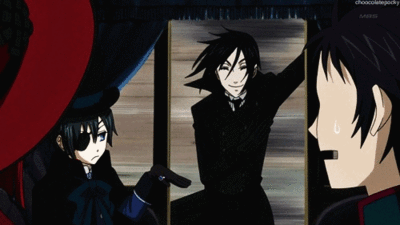


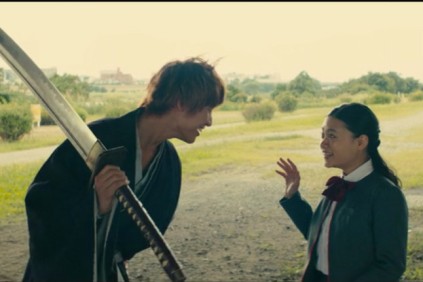

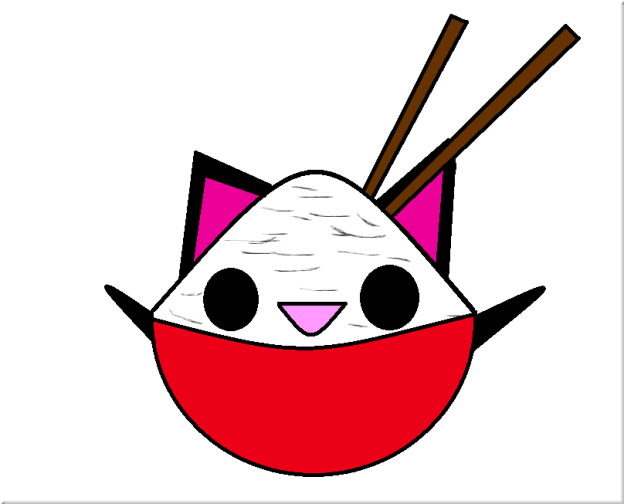
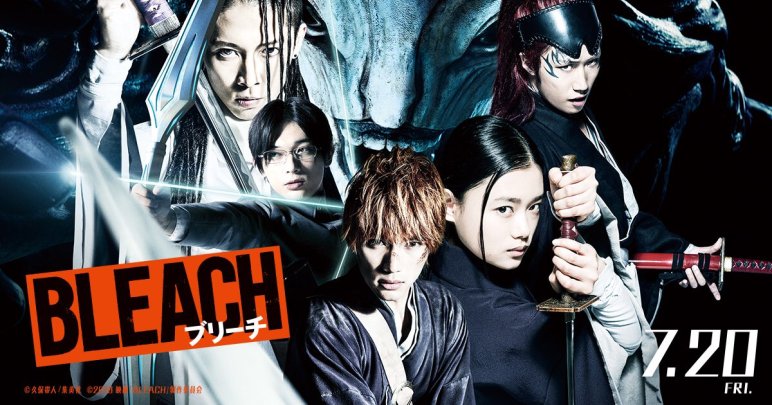
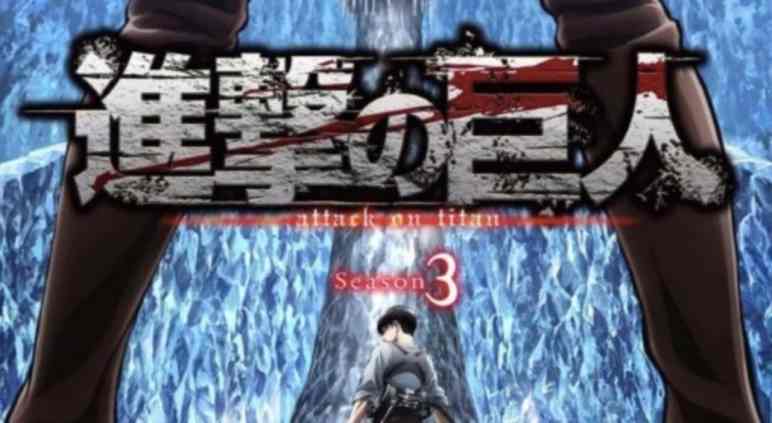
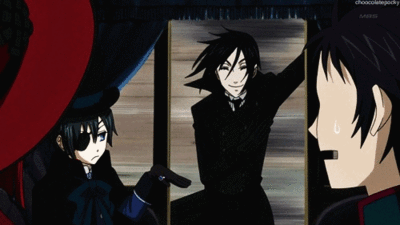
 Our new story begins with our favorite surviving cadets joining Levi’s special scouting squad (since the last ones got turned into Titan chow). The return of the friendly banter and bickering between Sasha, Connie, Jean, and Eren is a welcome relief and a great way to pull the audience back in. Titan-Eren also makes a return appearance but seems to be suffering from performance issues. His titan form now resembles a failed human transmutation, unable to break ten meters in height or stand up under its own weight. In short, Eren is very likely to be MIA this season, or at least out of the spotlight.
Our new story begins with our favorite surviving cadets joining Levi’s special scouting squad (since the last ones got turned into Titan chow). The return of the friendly banter and bickering between Sasha, Connie, Jean, and Eren is a welcome relief and a great way to pull the audience back in. Titan-Eren also makes a return appearance but seems to be suffering from performance issues. His titan form now resembles a failed human transmutation, unable to break ten meters in height or stand up under its own weight. In short, Eren is very likely to be MIA this season, or at least out of the spotlight.

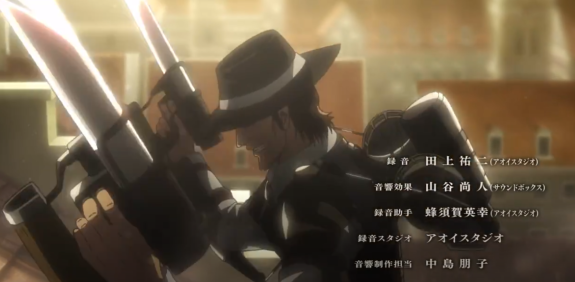
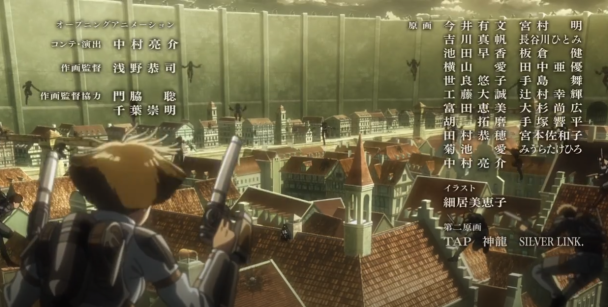


 Our story takes us to an odd place in this series: underground. It appears there’s a section of the population that’s been pushed to live inside a series of caves beneath the walled cities, and it’s as dingy and poor-ridden as one would expect. Because the lack of light makes everyone’s legs eventually go bad, people are forced to bribe their way up to the surface, where they are likely to be denied citizenship and sent back down. So, if you didn’t think the government of AOT was a pile of trash before, you certainly will after this and season two.
Our story takes us to an odd place in this series: underground. It appears there’s a section of the population that’s been pushed to live inside a series of caves beneath the walled cities, and it’s as dingy and poor-ridden as one would expect. Because the lack of light makes everyone’s legs eventually go bad, people are forced to bribe their way up to the surface, where they are likely to be denied citizenship and sent back down. So, if you didn’t think the government of AOT was a pile of trash before, you certainly will after this and season two.















 Meanwhile, you might miss the valley’s other resident hermit, the emo-tastic Sebastian. He’s got an unfortunate tendency to hide away in his room for very long stretches, typing away on the computer and only ever coming out for food, rain, or nighttime air. But there are some legitimate reasons for Sebastian’s self-imposed isolation and you’ll quickly find there’s a cute nerd hiding in that black sweater. Sebastian will not be for everybody, but I feel he’s worth the work.
Meanwhile, you might miss the valley’s other resident hermit, the emo-tastic Sebastian. He’s got an unfortunate tendency to hide away in his room for very long stretches, typing away on the computer and only ever coming out for food, rain, or nighttime air. But there are some legitimate reasons for Sebastian’s self-imposed isolation and you’ll quickly find there’s a cute nerd hiding in that black sweater. Sebastian will not be for everybody, but I feel he’s worth the work. Meanwhile, you will get a very rude reception from the overworked Shane, Marnie’s niece. He helps out with the chicken farm, so she can’t complain, but he’s starting to show some very worrying signs. From alcohol dependence to psychological depression, Shane is a project that will require lots of patience to slowly warm him up; it’s a real turn-around story and it has a lot of potential, albeit a lot of predictability.
Meanwhile, you will get a very rude reception from the overworked Shane, Marnie’s niece. He helps out with the chicken farm, so she can’t complain, but he’s starting to show some very worrying signs. From alcohol dependence to psychological depression, Shane is a project that will require lots of patience to slowly warm him up; it’s a real turn-around story and it has a lot of potential, albeit a lot of predictability. Alex is the jock and was a quick lesson for me not to judge people too much on first impressions. He’s arrogant and brash on first meeting, mostly to hide a lot of deep wounds on the inside. His story is about what you’d expect: encourage him to pursue his dreams in being a professional ball-player, teach him not to be so arrogant and ultimately help him move on from the tragedy in life. It’s just a shame that there’s no real class or style to Alex, at least not to me, so I don’t see myself adding him to my usual playthroughs.
Alex is the jock and was a quick lesson for me not to judge people too much on first impressions. He’s arrogant and brash on first meeting, mostly to hide a lot of deep wounds on the inside. His story is about what you’d expect: encourage him to pursue his dreams in being a professional ball-player, teach him not to be so arrogant and ultimately help him move on from the tragedy in life. It’s just a shame that there’s no real class or style to Alex, at least not to me, so I don’t see myself adding him to my usual playthroughs.


 Meanwhile, her sister does not inspire too many positive feelings in me. I see what she was supposed to be: the conceited, formerly rich, girl who needs to shed her superficiality to become a fun-loving, free-spirited, woman. The problem comes in that her story doesn’t really show that transition as well as it should have. There are not a lot of lessons learned with her, nor do you do much, if anything, to ingratiate yourself to her beyond opening a jar for her. I feel like Haley’s story is in need of some fluffing because, let’s face it, it feels rushed.
Meanwhile, her sister does not inspire too many positive feelings in me. I see what she was supposed to be: the conceited, formerly rich, girl who needs to shed her superficiality to become a fun-loving, free-spirited, woman. The problem comes in that her story doesn’t really show that transition as well as it should have. There are not a lot of lessons learned with her, nor do you do much, if anything, to ingratiate yourself to her beyond opening a jar for her. I feel like Haley’s story is in need of some fluffing because, let’s face it, it feels rushed.

 But far from least is Leah, the artist who’s also living as a hermit in the middle of nature. She left the city to become an artist, a sculptor, and she needs someone to give her a little extra boost of confidence. It’s up to the player to encourage her to sell her art in one way or another and maybe win her heart in the process. And, if that isn’t romantic enough for you, you may very well have to deal with the dreaded ex-partner. Leah’s story feels more complete and quite sweet, compared to a few others.
But far from least is Leah, the artist who’s also living as a hermit in the middle of nature. She left the city to become an artist, a sculptor, and she needs someone to give her a little extra boost of confidence. It’s up to the player to encourage her to sell her art in one way or another and maybe win her heart in the process. And, if that isn’t romantic enough for you, you may very well have to deal with the dreaded ex-partner. Leah’s story feels more complete and quite sweet, compared to a few others.


